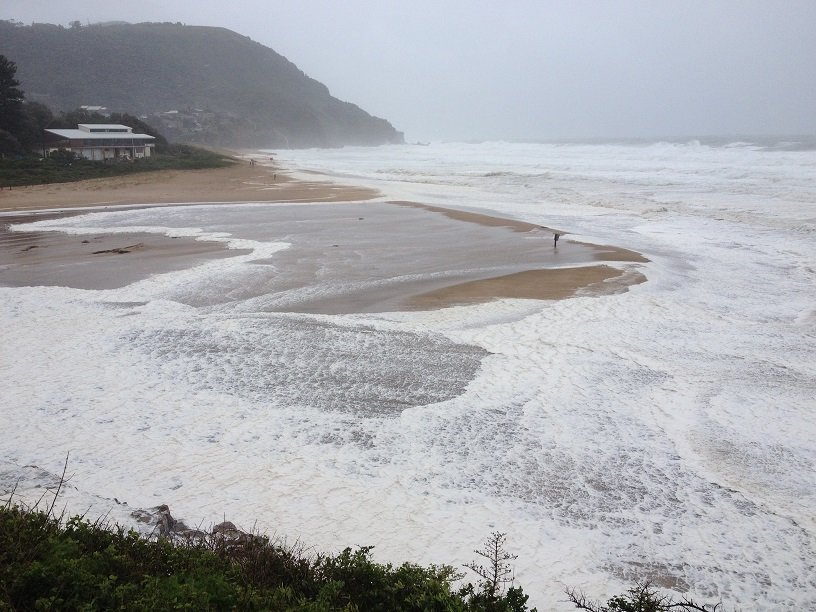Are we (NSW) at risk of Tsunami?
From the February 2022 issue of The Illawarra Flame magazine.
Our La Nina summer has made beachgoing an interesting experience with unusually warm water temperatures, large tropical cyclone swell eroding our beaches and bringing in seaweed, strong NE winds causing upwelling and cooling the water again, and torrential rain washing debris into the ocean and making a mess of our pools. Then we experienced a tsunami.
The eruption of the Tongan undersea volcano on January 15 sent tsunami waves across the Pacific resulting in warnings issued by the Bureau of Meteorology and beach closures along the NSW coast. While the height and damage caused by this particular tsunami was not on the same scale as the 2004 Boxing Day or 2011 Japanese tsunami, it’s worth thinking about just how much we understand tsunami and how much at risk our coast is.
Imagine bumping into a fish tank. The water will instantly slosh to the other side. In much the same way, tsunami are generated by a disturbing force that suddenly pushes massive amounts of water out of the way. Earthquakes and undersea volcanic eruptions can all cause a tsunami and, once formed, a tsunami is not just one wave, but a series of waves. It’s like dropping a stone into a pond and watching the waves radiate in all directions.
The important characteristics about tsunami waves is that they have very long wavelengths and periods (time between crests) and can travel extremely fast, both of which gives them a lot of power. How high they get depends largely on how they were generated and is difficult to predict. But once formed, oceanic tsunami recording stations and offshore wave gauges tell us exactly how big they are. The Port Kembla offshore wave buoy recorded a wave height of 0.65 m, but what does that wave height really mean?
Tsunami do not break like normal waves. Instead, because of their long period, they tend to arrive on our shorelines as surges. This was captured on social media with several sudden and rapid surges into some of our lagoons. On open beaches the impact was similar to a sudden uprush after a large wave set. The instability caused some bizarre water level and current activity for a while, but all in all it wasn’t particularly hazardous. But this was a relatively small tsunami. Are we at risk of a truly catastrophic event?
Fortunately the answer is ‘probably’ not. Although we can (and do) experience tsunami generated from multiple locations across the Pacific, we are somewhat protected by the nature of the ocean floor bathymetry and our steep and narrow continental shelf and are considered to be at much less risk than other parts of the world. But you never know - so please take those warning seriously!
Not a tsunami on a beach near me (just an East Coast Cyclone) - but it could be, although it’s highly unlikely

